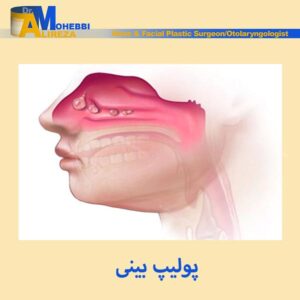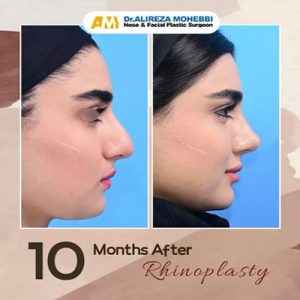Mohsen Darabi & Peyman Varedi & Ali Reza Mohebi & Simin Mahmoodi & Payam Varedi & Seyed Ali Nabavizadeh & Artemis Erfan & Ahmad Ostadali Makhmalbaf & Daryoush Saedi & Seyed Reza Saadat Mostafavi & Seyed Mehdi Mousavi. Oral Maxillofac Surg (2009) 13:33–35
Introduction
Hydatid disease is a severe parasitic infestation caused by larval stage of the cestode tapeworm Echinococcus granulosus. Primary hydatid cyst of the parotid gland is extremely rare, even in Iran, in which echinococcal disease is endemic [ 1– 3]. Herein, we report a rare case of hydatid cyst of parotid gland and discuss the other differential diagnosis of the cystic lesions of parotid gland.
Case report
A 23-year-old woman was referred to our hospital complaining of 4 months of slowly progressive swelling in the right periauricular region which was accompanied with mild right-sided facial pain. She developed facial paresis of the same side. She had no history of fever or weight loss during this period and past medical and drug history was unremarkable. On the physical examination, a 4×4 cm cystic and mobile mass in the right parotid area and inability for elevation of the right brow were demon-strated but rest of the facial muscles were normal on the examination. Computed tomography (CT) scan of the head and neck regions revealed a well-demarcated, round mass with water-density attenuation in the right parotid gland (Fig. 1).
Remaining laboratory studies including serological investigations, as well as CT scans of abdomen and pelvis were normal. Aspiration of the cystic mass for identifying its nature was performed but fine-needle aspiration cytology of the aspirated fluid yielded no definitive diagnosis. Therefore, after the obtaining a signed consent from the patient, we decided to perform resection of the mass and superficial parotidectomy. At the operation, the cystic mass replacing most of the superficial part of the right parotid gland was demonstrated.
It was located near the frontal branch of the facial nerve with mild discoloration of the nerve, but was easily resected from the mass. During the operation, diagnosis of hydatidosis was on the basis of frozen-section studies then superficial parotidectomy and facial nerve preserving was carried out. Under light microscopy, clear evidence of hydatid scolices verifying the presumed diag-nosis of echinococcosis (Figs. 2 and 3). Post-operatively, albendazole therapy was given for 2 months under liver enzyme and blood count monitoring. In a 1-year follow-up, no recurrence has occurred and the patient remained asymptomatic.

Fig. 1 Axial CT scan of the head and neck region demonstrates a
well-defined cystic hypodense lesion in the parotid gland

Fig. 2 H&E staining of the specimen shows the hydatid cyst

Fig. 3 H&E staining of the parotid gland tissue shows a portion of hydatid
cyst adjacent to the parotid gland normal tissue
Discussion
Hydatid disease is a parasitosis known as hydatidosis or echinococcosis caused by the larval stage of the cestode tapeworm Echinococcus granulosus. It affects both animals and humans. Human beings are the incidental intermediates in the biologic cycle of the Taenia echinococcusis. It is endemic in many sheep- and cattle-raising areas of the world, notably, the Mediterranean countries, South America, the Middle East, and Australia [ 1– 4].
The most commonly involved organs are the liver and lungs. Primary hydatid cyst of the parotid gland is extremely rare, even in our country, in which echinococcal disease is endemic [ 2, 4]. It has been stated that hydatid cysts of the parotid gland are always primary. Review of the English literature shows that most of the parotid hydatidosis cases have been reported from Turkey, Spain, France, Italy, and Germany. To the best of our knowledge, only one case of hydatidosis of the parotid gland from Iran has been reported in the English literature so far [ 2]. Emamy et al. reported this case in a series of four cases of hydatid disease of unusual sites [ 2].
Diagnosis of hydatid disease can be easily established by considering the geographic region and with help from the serologic and imaging studies. Enzyme-linked immunosor-bent assay (ELISA) and immune hemagglutinatin (IHA) is the most common serologic test; however, negative serology does not exclude the diagnosis [ 1– 5]. It has been stated that radiologic methods are the most valuable diagnostic tools. Among the imaging modalities, computed tomography (CT) scan has been shown to be a valuable method for establishing the appropriate diagnosis [ 6].
It should be emphasized that diagnosis of hydatid cyst of parotid gland, even in an endemic area, may become very difficult and even impossible; however, accidental rupture of hydatid cyst during surgery may be life-threatening, furthermore, hydatid disease and malignant diseases of the parotid gland may present in the same way. Therefore, pre-operative diagnosis of this rare lesion is very important. The most important factor in diagnosis of hydatid disease of parotid is the high index of suspicion about its possibility [ 2, 3]. As already noted, in the present case, facial paresis pointed us to the possibility of a growing tumoral mass in the parotid gland. We agree with Emamy et al. [ 2] that in the endemic areas, hydatid disease of parotid gland should be considered in the differential diagnosis of any tumor-like growing mass.
Other congenital and acquired cystic lesions of parotid gland should be differentiated from this rare entity. Congenital cysts include dermoid and epidermoid cysts, first bronchial cleft cysts, and cystic hygromas. Dermoid and epidermoid cysts may be located within the parotid and submandibular glands. First bronchial cleft cysts are also commonly seen as smooth, nontender and fluctuant masses in the periauricular and parotid glands.
Uncommonly, cystic hygroma of the parotid gland may present as an asymptomatic, soft, fluctuant mass. They appear hypodense on CT scans, low to intermediate signal intensity on T1- and high signal intensity on T2-weighted images. The acquired cysts include those of lymphoepithelial origin and those secondary to obstruction, to infection, and to tumors. High degree of correlation has been demonstrated between human immunodeficiency virus (HIV) seropositivity and the presence of multicentric parotid benign lymphoepi-thelial cysts but presence of these cysts are not confined to HIV infection and may be associated with chronic infection, autoimmune diseases such as Sjögren syndrome, systemic lupus erythematosus (SLE), polyartheritis nodosa, polymyo-sitis, and scleroderma and even seen in the idiopathic states [ 7].
The primary treatment for hydatid disease is still the surgical excision of the cysts. The major advantages of surgery compared with other types of treatment are the removal of cysts and fluid completely. Operative access will be chosen on the basis of the number, size, and location of cysts, nature of complications and previous surgery. Medical treatment with benzimidazole group drugs, such as albenda-zole and mebendazole, is necessary in disseminated cases, and in the patients in whom surgery is high risk. It is also recommended in the pre- and post-operative periods [ 1– 5].
Pre-surgery treatment with albendazole may facilitate a complete removal of germinal layer cells. Blood count and transaminases must be checked routinely after the operation. In our case, we started albendazole in post-operative period and continued for 2 months after the surgery [ 4– 7]. Puncture Aspiration Injection Reaspiration (PAIR) has been proposed as an alternative to surgery. In this method, complete aspiration is performed after ultrasound guided percutaneous puncture; the residual cavity is then filled with a proto-scolicide, usually ethanol, and reaspirated soon after that. Akhan et al. presented the first case of hydatid cyst of parotid gland treated percutaneously by using PAIR tech-nique and concluded that percutaneous treatment of parotid hydatid cyst seems to be effective and can be a safe alternative treatment to surgery [ 8].
The interesting points of our case are the negative results of serologic investiga-tions and evidence of facial nerve paresis on physical examination. Furthermore, no primary focus of hydatid disease in the lungs, liver, and other organs was found. Constellation of these findings made the diagnosis of hydatid cyst very uncommonly. In conclusion, where the incidence of the hydatid disease is high, hydatid cyst of parotid gland should be considered in the differential diagnosis of lesions causing swelling of the parotid area.
References
- Rajendra Gopal SV, Mahadeva Sastry N, Venkataramana G (1985) Hydatid cyst of parotid. A case report. Indian J Pathol Microbiol 28:75–76
- Emamy H, Asadian A (1976) Unusual presentation of hydatid disease. Am J Surg 132:403–405
- Saxena SK, Chaudhary SK, Saxena GR, Rao S (1983) Hydatid cyst of the parotid gland (a case report). J Postgrad Med 29:105–106
- Tekin M, Osma U, Yaldiz M, Topcu I (2004) Preauricular hydatid cyst: an unusual location for echinoccosis. Eur Arch Otorhinolaryngol 261:87–89
- Karahatay S, Akcam T, Kocaoglu M, Tosun F, Gunhan O (2006) A rare cause of parotid swelling: primary hydatid cyst. Auris Nasus Larynx 33:227–229
- Kalovidouris A, Gouliamos A, Andreou I, Ioannovits I, Levett J, Vlahos I et al (1985) Primary hydatid disease of the infratemporal fossa and the parotid gland. Radiologe 25:235–236. [abstract]
- Mafee MF (2005) Salivary glands. In: Valvassori GE, Mafee MF, Carter BL (eds) Imaging of the head and neck. 2nd edn. Thieme, New York, pp 625–681
- Akhan O, Ensari S, Ozmen M (2002) Percutaneous treatment of a parotid gland hydatid cyst: a possible alternative to surgery. Eur Radiol 12:597–599





